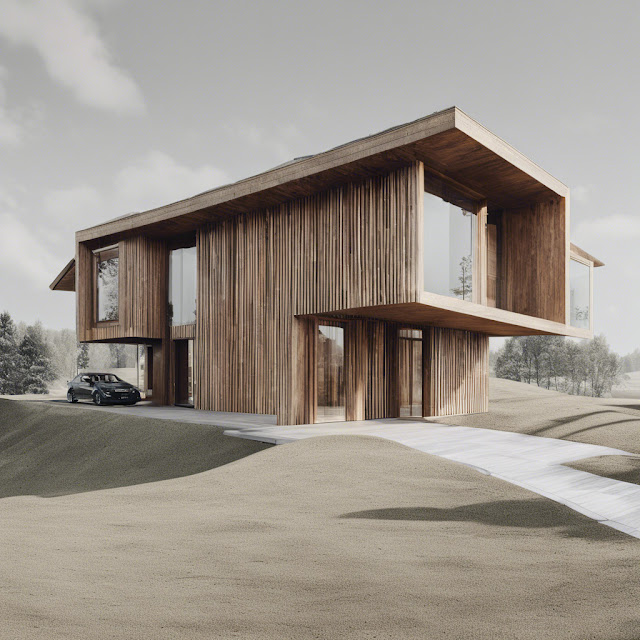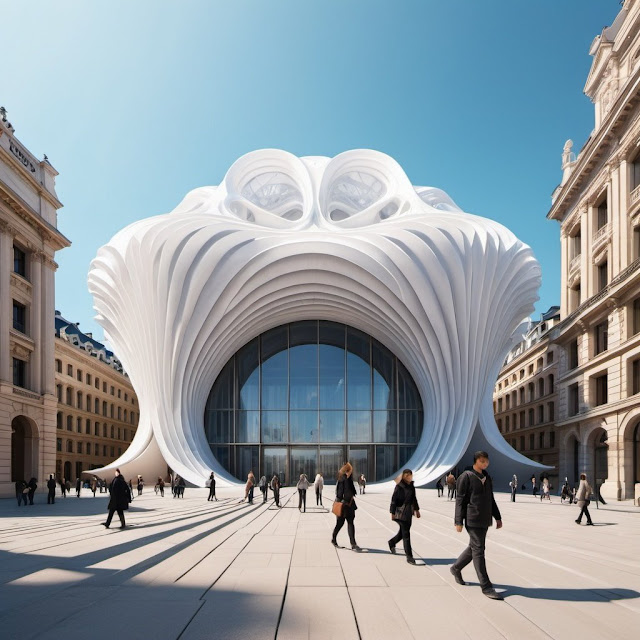In the realm of architecture, the seamless integration of indoor and outdoor spaces has become a hallmark of contemporary design, blurring the boundaries between the built environment and the natural world. Architects are increasingly recognizing the importance of fostering connections between interior and exterior spaces, not only to enhance the functionality and livability of buildings but also to create immersive experiences that engage with the surrounding environment. In this article, we explore the principles, strategies, and benefits of connecting inside and outside in architecture, highlighting the transformative impact on the way we inhabit and experience built spaces.
1. Design Continuity and Flow:
The integration of indoor and outdoor spaces in architecture creates a sense of continuity and flow throughout the built environment, seamlessly transitioning between interior and exterior realms. Architects utilize design strategies such as open floor plans, expansive glazing, and visual connections to extend interior spaces outward, blurring the distinction between indoor and outdoor living areas. This design continuity enhances the spatial perception of buildings, creating a sense of expansiveness and connection with the surrounding landscape.
2. Visual Transparency and Connection:
Visual transparency plays a crucial role in connecting inside and outside spaces, allowing occupants to maintain a visual connection with the natural environment while being sheltered within the built environment. Large windows, glass doors, and clerestory windows frame views of the outdoors, bringing natural light, views, and ventilation deep into interior spaces. This visual connection fosters a sense of openness and connection with nature, enhancing the quality of indoor environments and promoting well-being for occupants.
3. Functional Connectivity and Access:
Functional connectivity between indoor and outdoor spaces is essential for creating seamless transitions and facilitating easy access between different areas of a building. Architects carefully plan circulation paths, entryways, and transitions between interior and exterior spaces to ensure accessibility and usability for occupants. Features such as sliding glass doors, bi-fold doors, and pocket doors provide flexible solutions for opening up interior spaces to outdoor patios, gardens, or courtyards, allowing for effortless movement and interaction between inside and outside areas.
4. Indoor-Outdoor Living Experience:
The integration of indoor and outdoor spaces in architecture offers an immersive living experience that blurs the boundaries between indoor comfort and outdoor freedom. Outdoor living areas such as patios, terraces, and balconies serve as extensions of interior spaces, providing opportunities for relaxation, dining, and socializing in a natural setting. Architects design these outdoor spaces with careful consideration of climate, orientation, and privacy, creating inviting environments that seamlessly integrate with the surrounding landscape.
5. Biophilic Design and Well-being:
Biophilic design principles emphasize the innate human connection with nature and the importance of incorporating natural elements into the built environment to promote well-being and environmental sustainability. By integrating indoor and outdoor spaces, architects can leverage biophilic design strategies such as natural daylighting, views of nature, and access to greenery to enhance occupant comfort, productivity, and overall health. Research has shown that exposure to nature and outdoor environments has numerous benefits for physical and mental well-being, including reduced stress levels, improved cognitive function, and increased productivity.
6. Sustainable Design and Environmental Stewardship:
The integration of indoor and outdoor spaces in architecture aligns with principles of sustainable design and environmental stewardship by promoting energy efficiency, natural ventilation, and passive heating and cooling strategies. By opening up interior spaces to outdoor environments, architects can optimize daylighting and natural ventilation, reducing the reliance on artificial lighting and mechanical HVAC systems. Outdoor green spaces such as gardens, green roofs, and living walls also contribute to biodiversity, mitigate urban heat island effects, and improve air quality, promoting environmental sustainability and resilience in the built environment.
Conclusion:
In conclusion, the seamless integration of indoor and outdoor spaces in architecture represents a paradigm shift in the way we conceive and experience built environments. By fostering connections between inside and outside areas, architects create immersive living experiences that promote well-being, sustainability, and environmental stewardship. Whether through visual transparency, functional connectivity, or biophilic design principles, the integration of indoor and outdoor spaces transforms buildings into dynamic environments that engage with the natural world, enriching the lives of occupants and fostering a deeper connection with the surrounding landscape.
































































